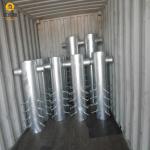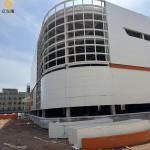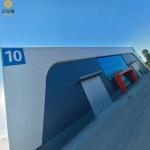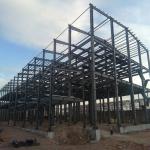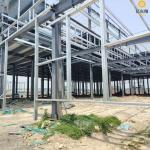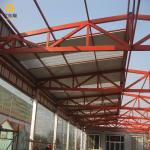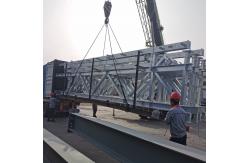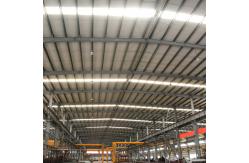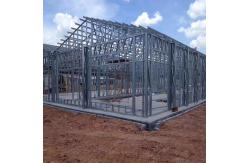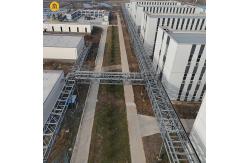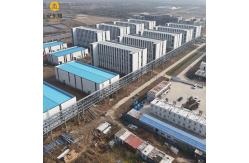Metal Frame Workshop Metal Building Modular Design Prefabricated
Steel Structure Warehouse Introduction to Steel Metal Frame StructuresSteel metal frame structures are a type of construction form that
uses steel as the primary load-bearing component. They are widely
used in industrial plants, commercial buildings, high-rise
residential buildings, and other fields. Their core features
include high strength, lightweight, fast construction speed, and
excellent seismic performance, making them a mainstream choice in
modern architecture. Key Features: - High Strength: Steel has excellent tensile and compressive properties, enabling
it to withstand significant loads.
- Lightweight: Compared to concrete structures, steel structures are lighter,
reducing the pressure on the foundation.
- Flexibility: Steel is easy to process and install, meeting complex design
requirements.
- Environmental Friendliness: Steel structures are recyclable, aligning with sustainable
development principles.
Key Points of Design Scheme(1) Structural System Selection- Frame Structure: Suitable for multi-story buildings such as offices and
residential buildings, offering flexible spatial layouts.
- Truss Structure: Ideal for large-span buildings like stadiums and exhibition
halls, effectively reducing material usage.
- Space Frame Structure: Suitable for buildings with complex spatial forms, such as
airport terminals, offering high aesthetic and functional value.
(2) Material Selection- Steel Type: Choose high-strength steels like Q235 and Q345 based on load and
design requirements.
- Anti-Corrosion Treatment: Apply hot-dip galvanizing or painting to enhance corrosion
resistance.
- Fire Protection: Use fireproof coatings or boards to ensure safety in case of
fire.
(3) Joint Design- Rigid Joints: Use welding or high-strength bolts to ensure joint stiffness and
strength.
- Flexible Joints: Adopt flexible joint designs in seismic zones to absorb
earthquake energy and reduce structural damage.
- Joint Reinforcement: Reinforce critical joints by adding stiffeners or gusset plates.
(4) Construction Plan- Prefabricated Components: Manufacture components in factories to ensure dimensional and
quality accuracy, reducing on-site errors.
- Installation Sequence: Strictly follow design drawings and construction standards to
ensure structural integrity.
- Quality Control: Conduct quality inspections on key processes like welding and
bolting to ensure construction quality.
(5) Monitoring and Maintenance- Real-Time Monitoring: Install sensors to monitor stress, deformation, and vibration,
promptly identifying potential issues.
- Regular Maintenance: Perform periodic inspections and maintenance, repairing damaged
or aging components to ensure long-term safety.
Design Case ExampleProject Name: Steel Structure Design for an Industrial Plant
Design Highlights: - Structural System: Adopt a rigid frame structure to meet large space requirements.
- Material Selection: Use Q345 steel with hot-dip galvanizing for anti-corrosion
treatment.
- Joint Design: Employ high-strength bolted connections and reinforce critical
joints.
- Construction Plan: Prefabricate components in factories for rapid on-site
installation, ensuring construction timelines.
- Monitoring and Maintenance: Install sensors for real-time structural monitoring and develop a
regular maintenance plan.
SummaryThe design of steel metal frame structures requires comprehensive
consideration of structural systems, material selection, joint
design, construction plans, and monitoring and maintenance. Through
scientific design and strict construction quality control, the
safety, durability, and economic efficiency of steel structures can
be ensured, meeting the diverse needs of modern architecture. Additional Information: - Modern steel structure design often employs BIM (Building
Information Modeling) technology for 3D modeling and optimization.
- In green building practices, the environmental benefits and
recyclability of steel structures make them a key choice for
sustainable development.
|
